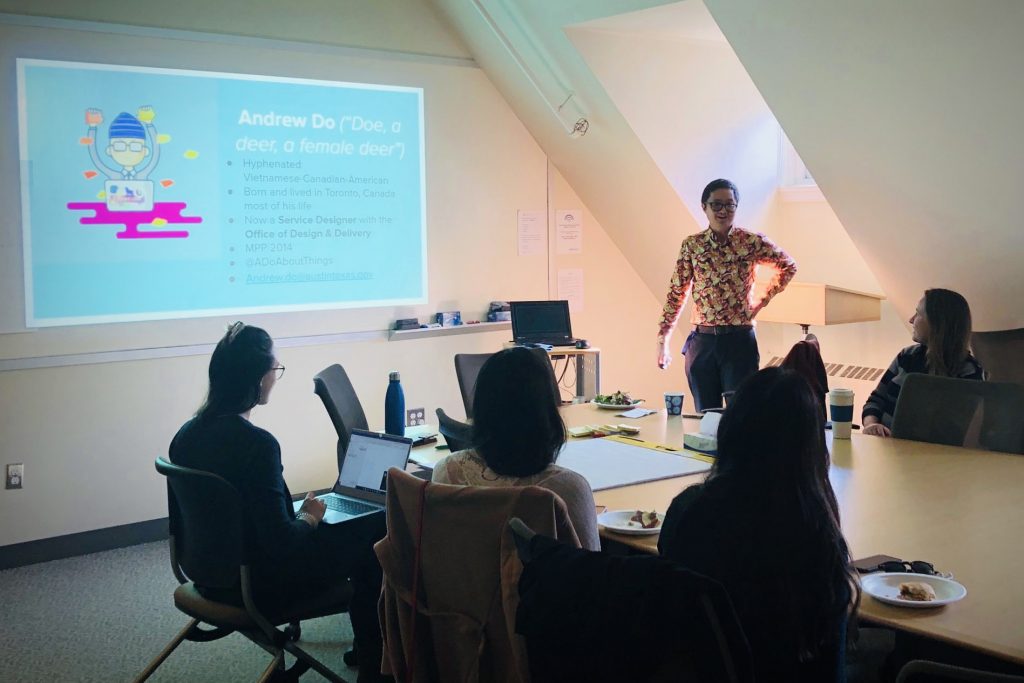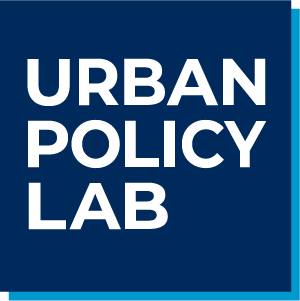
On October 11th, the Urban Policy Lab launched its interactive speaker series ‘Get Lunched!’ with a lesson on service design from Taylor Cook and Andrew Do from the City of Austin. UPL graduate fellow Jolene Funk, who organized and attended the event, shares what she learned from our guests.
On October 11th, Taylor Cook and Andrew Do from the City of Austin came to the University of Toronto and led an interactive workshop on Service Design for Municipalities. The event was attended by Master of Public Policy Students and MPP alumni working in provincial and municipal governments.
The workshop focused on the application of design thinking for policy beyond the theory the attendees have learned. Service design encompasses 3 main elements: customer-centric, co-creation, and a holistic approach. Andrew Do, MPP alumni, walked us through the differences in Canadian and American cities including their respective relationship with the provinces and states. Austin and Toronto also have several similarities including their fast-growing tech hubs and associated challenges, weak mayor systems, and state inventions in municipal actions.
“We knew that in order to redesign our services, we needed to have residents involved.”
The Office of Design and Delivery in Austin is a new branch created to improve the interaction between service providers and their customers. They focus on building trust and civic engagement to create services together with civic input. They shared their experience in their pilot for people experiencing homelessness. They sought to understand residents’ challenges and what services the residents knew were available to them.
What made their strategy unique is how they collected this information. They invited people experiencing homelessness to continually share feedback as part of a panel and offered comfortable spaces to meet and financial incentives. They also went out to the spaces people were staying in. One example was aquifers, where staff visited to make sure residents were safe, healthy, and were not impacting the environmental mission of the space. They worked with park staff to ensure that staff did not mistakenly dispose of personal belongings stored there. They also worked with the residents to teach them safe fire practices, finding potable water, and leave no trace principles.
“You don’t need visual design skills to do service design. You just need to be curious about people, empathetic, and want to understand how people use services.”
They next took us through the process of service design. The stages: identify and frame the problem (example: where do I store my things?), divergent thinking opening up possibilities (exploring the problem); convergent thinking (identify patterns and opportunities to create); and reflecting and testing. They reviewed different methods for talking to people and when to use each method.
Finally, participants got to put their new skills to the test with an activity. We were asked to imagine we were moving to a new apartment. We had to think of all of the questions we would need to ask, identify pain points, and separate out front end issues (the things we see and interact with) from the back end issues (things that happen behind the scenes through existing processes). We then added these points into a journey map and were surprised by how many small steps were involved and all of the backend players who were a part of the process!
Andrew and Taylor then answered participants’ questions on interviewing people with vulnerabilities, developing incentives, how to start small, and how to work with other departments and governments.
Participants came away with tools ready to apply to their service design needs and a new perspective on what effective service design looks like.
You can follow Andrew Do on twitter (@ADoAboutThings) for more insights into his work. For updates on Urban Policy Lab, follow our twitter @UrbanPolicyLab or subscribe to our newsletter here.

